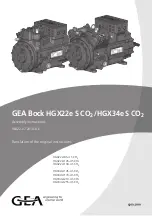
CG-PRC026C-GB
10
Unit Placement
Setting The Unit
A base or foundation is not required if the selected unit
location is level and strong enough to support the unit’s
operating weight (see “Weights” section of this catalog).
For a detailed discussion of base and foundation
construction, refer to the sound engineering bulletin or
the unit IOM. Manuals are available through the local
Trane offi ce.
HVAC equipment must be located to minimize sound
and vibration transmission to the occupied spaces of
the building structure it serves. If the equipment must
be located in close proximity to a building, it should be
placed next to an unoccupied space such as a storage
room, mechanical room, etc. It is not recommended to
locate the equipment near occupied, sound sensitive
areas of the building or near windows. Locating the
equipment away from structures will also prevent sound
refl ection, which can increase sound levels at property
lines or other sensitive points.
Isolation and Sound Emission
Structurally transmitted sound can be reduced
by elastomeric vibration eliminators. Elastomeric
isolators are generally effective in reducing vibratory
noise generated by compressors, and therefore, are
recommended for sound sensitive installations. An
acoustical engineer should always be consulted in
critical situations.
Figure 9 - Installation example
For maximum isolation effect, water lines and electrical
conduit should also be isolated. Wall sleeves and rubber
isolated piping hangers can be used to reduce the sound
transmitted through water piping. To reduce the sound
transmitted through electrical conduit, use fl exible
electrical conduit.
Local codes on sound emissions should always be
considered. Since the environment in which a sound
source is located affects sound pressure, unit placement
must be carefully evaluated. Sound power levels for
chillers are available on request.
Servicing
Adequate clearance for evaporator and compressor
servicing should be provided. Recommended minimum
space envelopes for servicing are located in the
dimensional data section and can serve as a guideline
for providing adequate clearance. The minimum space
envelopes also allow for control panel door swing
and routine maintenance requirements. Local code
requirements may take precedence.
Unit Location
General
Unobstructed fl ow of condenser air is essential to
maintain chiller capacity and operating effi ciency. When
determining unit placement, careful consideration
must be given to assure a suffi cient fl ow of air across
the condenser heat transfer surface. Two detrimental
conditions are possible and must be avoided: warm air
recirculation and coil starvation. Air recirculation occurs
when discharge air from the condenser fans is recycled
back to the condenser coil inlet. Coil starvation occurs
when free airfl ow to the condenser is restricted.
Condenser coils and fan discharge must be kept free of
snow or other obstructions to permit adequate airfl ow
for satisfactory unit operation. Debris, trash, supplies,
etc., should not be allowed to accumulate in the vicinity
of the air-cooled chiller. Supply air movement may draw
debris into the condenser coil, blocking spaces between
coil fi ns and causing coil starvation.
Both warm air recirculation and coil starvation cause
reductions in unit effi ciency and capacity because of
the higher head pressures associated with them. The
air-cooled Conquest chiller offers an advantage over
competitive equipment in these situations. Operation is
minimally affected in many restricted air fl ow situations
due to its advanced chiller controller.
Microprocessor which has the ability to understand the
operating environment of the chiller and adapt to it by
fi rst optimizing its performance and then staying on
line through abnormal conditions. For example, high
ambient temperatures combined with a restricted air
fl ow situation will generally not cause the air-cooled
model CGAX chiller to shut down. Other chillers would
typically shut down on a high pressure nuisance cut-out
in these conditions.
Cross winds, those perpendicular to the condenser, tend
to aid effi cient operation in warmer ambient conditions.
However, they tend to be detrimental to operation
in lower ambients due to the accompanying loss of
adequate head pressure. Special consideration should
be given to low ambient units. As a result, it is advisable
to protect air-cooled chillers from continuous direct
winds exceeding 4.5 m/s in low ambient conditions.
Chiled water piping
should be supported.
Isolators
Flexible electrical
conduit
Concrete base
Isolators
Piping isolation
Содержание CGAX/CXAX
Страница 1: ...CG PRC026C GB Conquest air cooled chillers and heat pumps Scroll compressor Model CGAX CXAX 42 160 kW...
Страница 46: ...CG PRC026C GB 46 Typical Unit Schematics Figure 11 Refrigerant Chart Cooling only Units...
Страница 47: ...CG PRC026C GB 47 Typical Unit Schematics Figure 12 Refrigerant Chart Heat Pump Units...
Страница 51: ...CG PRC026C GB 51 Notes...











































